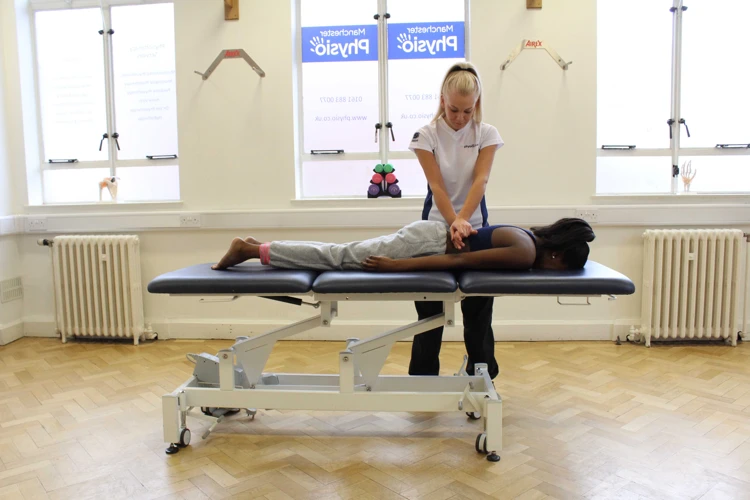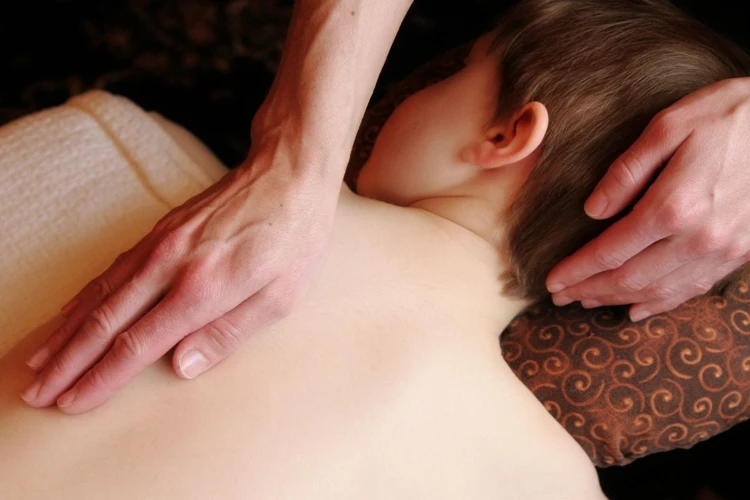Are you looking for a way to help your child relax and unwind? Massage is a great way to do just that! In this article, we’ll cover some simple steps on how to massage kids to help them relax and de-stress. We’ll also discuss some of the benefits of massage for kids and how to make it a regular part of your family routine. So read on to find out how to massage kids for maximum relaxation and stress relief!
Contents
Benefits of Massaging Kids

Massaging children not only helps them to relax, but it is also beneficial for their physical and mental well-being. Parents and caregivers can use massage therapy to reduce stress and anxiety, provide comfort and relaxation, and promote better sleep. Massage can also help reduce muscle tension, improve blood circulation, reduce pain, and provide a better connection between parent and child. Massaging a child may also help to strengthen the immune system and improve overall development. Massaging also provides a great opportunity to bond with your child and build a trusting relationship.
Massage therapy can also provide a calming effect for children who are feeling overwhelmed or overstimulated. Gentle massage techniques can help to soothe and relax the body, while also providing comfort and security. Massage can also help to reduce emotional stress, anxiety, and even aggression in some cases.
In addition to physical and emotional benefits, there are also cognitive benefits to massaging a child. Massage can help to improve concentration and focus, as well as improve memory, problem-solving capabilities, and language development. Massage can also help to stimulate creativity and imagination.
Overall, massage therapy can provide invaluable benefits to children of all ages. It is important to note, however, that massage should always be done with the consent of the child and with caution to ensure that the child is not in any discomfort. The best way to learn how to massage a child is to consult with a trained massage therapist.
Preparation for Massaging Kids

Choose a calm and comfortable environment: Find a quiet and comfortable place where your child can relax and feel secure. Make sure that the room is warm enough and has no distractions.
Choose the right massage oil: Choose an appropriate massage oil such as a light vegetable oil or a natural oil like almond or coconut oil. Make sure that the oil is not too hot or cold and test it on your own skin before applying it on the child.
Create a relaxing atmosphere: Create a relaxing atmosphere by playing soothing music, lighting some candles, or using essential oils. You can also use a calming voice and gentle touch to help your child relax.
Communicate with your child: Talk to your child before the massage and let them know what you are going to do. Ask them if they are comfortable with the massage and answer any questions they may have.
Be mindful of your child’s reactions: Pay attention to your child’s reactions during the massage and be prepared to stop if they become uncomfortable. Respect your child’s boundaries and don’t push them to do something they don’t want to do.
Techniques for Massaging Kids

Swedish Massage
Swedish Massage is a full-body massage that uses long, flowing strokes and gentle pressure to relax the body. It is a great way to help kids relax and can help them to get to sleep.
Shiatsu Massage
Shiatsu Massage is a unique type of massage therapy that uses pressure points and stretching to help relieve tension and stress. It is a great way to help kids relax and can help them to get to sleep.
Reflexology
Reflexology is a form of massage that focuses on the feet and hands. It is designed to help relieve tension and stress, and can help to improve circulation and promote overall wellbeing. It is a great way to help kids relax and can help them to get to sleep.
Areas of the Body to Focus On

Back
Gently rub your child’s back in circular motions. Start at the base of the spine and work your way up, using slow and gentle pressure.
Arms
Use your fingertips to make small circles on the arms. Pay attention to any knots or tight spots, and apply a little more pressure to these areas.
Legs
Start at the feet and work your way up. For the calves, use gentle circular motions. For the thighs, use long strokes up and down the muscle. Use your thumbs to apply a bit more pressure to any tight spots.
Safety Considerations When Massaging Kids

Ensure Comfort and Safety Before massaging your child, make sure that they are comfortable and safe. Ensure that the massage area is warm, and use a pillow or blanket for extra comfort. Additionally, make sure that the massage is done in a quiet, private area and that there are no distractions.
Check for Physical Injuries Before beginning the massage, check your child’s body for any physical injuries. If there are any, avoid massaging that area, or seek medical advice if necessary.
Be Gentle Massaging your child should be gentle and should never be painful. If your child experiences any pain, stop immediately and speak with them to identify the cause.
Use Appropriate Pressure When massaging your child, be sure to use the appropriate amount of pressure. Too much pressure can be uncomfortable and too little pressure can be ineffective.
Be Mindful of Privacy Massaging your child should be a private and intimate experience. Never massage your child in front of other people and be sure to respect their privacy.
Use Appropriate Products Choose massage products that are appropriate for your child’s age and skin type. Never use products that contain strong fragrances or harsh chemicals.
Tips for a Relaxing Massage for Kids

- Provide a comfortable and familiar environment – Make sure the area where you’re going to massage your child is comfortable and familiar to them. That way, they’ll feel safer and more relaxed.
- Communicate with your child – Talk to your child before and during the massage. Ask them if they like the pressure, if they want you to go slower or faster, or if they want you to switch to another area. Communication is key for a successful massage.
- Avoid any intense pressure – When massaging your child, apply gentle pressure with your fingers, hands, and arms. Massage should never be painful for your child.
- Use a variety of motions – To ensure a relaxing massage, incorporate different motions while massaging. Try using long strokes, circular motions, and gentle tapping.
- Focus on the child’s needs – When giving a massage, focus on the areas where your child is sore, tense, or uncomfortable. Massaging these areas can help ease the pain and promote relaxation.
- End with a special touch – Finish your massage with a special touch, like a hug or a gentle back rub. This will help your child feel loved and appreciated.
Aftercare for Massaging Kids
Be Patient – Massaging kids can be a sensitive process, so be sure to be patient and provide a comforting atmosphere.
Let Them Play – After the massage, let your child play and move around to help them adjust to being energized.
Provide Comfort – It’s important to provide comfort and reassurance to your child after the massage.
Encourage Relaxation – Encourage your child to relax and unwind after the massage, as this will help them to process what they experienced.
Discuss Benefits – Talk to your child about the benefits of massage so that they can understand why it’s important for their health.
Provide Positive Reinforcement – Positive reinforcement is key for kids to stay engaged and motivated. Let them know that they did a great job and that you are proud of them.
Frequently Asked Questions
What Age Should Children Start Receiving Massages?
Massages can be beneficial for children of all ages, but it is generally recommended that children start receiving massages when they are infants. Massage can help with colic, sleep issues, and general fussiness in infants, as well as providing relaxation and soothing. As children grow, massages can help alleviate muscle tension, improve circulation, and reduce stress. It is important to tailor massages to the needs of the individual child and allow them to set their own boundaries.
Are there any precautions I should take when giving my child a massage?
When giving a massage to a child, it is important to keep safety and comfort in mind. Make sure the massage is gentle and not too rough. Avoid massaging any areas that are injured, inflamed, or sensitive. Also, ensure your massage strokes are gentle and do not cause any discomfort. Be aware of any underlying medical conditions your child may have. If in doubt, consult your doctor before giving a massage.
Are there any long-term benefits of massage for children?
Massage therapy can have both short-term and long-term benefits for children. Regular massage can help reduce stress, improve sleep, and increase relaxation. It can also improve posture and concentration, and help with physical recovery from an injury or illness. Studies have also found that massage therapy can help reduce anxiety and depression in children, as well as improve behavior and self-esteem.
Are there any particular techniques I should use when massaging my child?
- Use gentle pressure: Applying too much pressure can cause discomfort and pain. Opt for light strokes and use your fingertips and hands to massage your child’s back, arms, legs and feet.
- Vary the technique: Experiment with different techniques such as kneading, rolling, tapping and rubbing. This will help to create a soothing and calming environment.
- Talk to your child: Talk to your child while you massage them. This will help to build a trusting relationship between you and your child and will help them to relax.
- Pay attention to their reactions: Make sure to pay attention to your child’s reactions during the massage. If they seem uncomfortable or in pain, stop the massage.
- Focus on the head and neck: Pay special attention to the head and neck area when massaging your child. This area is often the most tense and can benefit from a gentle massage.
What Types of Massage Oils Are Suitable for Children?
Choosing the right massage oil is essential for a safe and successful massage session with your child. The best massage oils for kids are natural, hypoallergenic, and free of fragrances and other additives. Some of the best types of massage oils for children are:
- Coconut oil
- Almond oil
- Olive oil
- Grapeseed oil
- Sunflower oil
These types of oils are all easily absorbed, moisturizing, and hypoallergenic, making them great for children’s delicate skin. You can also find specially formulated massage oils for children that contain natural ingredients such as chamomile and lavender to help soothe and relax them.
Conclusion
Massaging your child is a great way to help them relax and unwind. With a few simple steps, you can create an atmosphere of safety and comfort to help your child feel secure and relaxed. Keeping the massage light and focusing on providing comfort and relaxation will help your child to enjoy the experience, and the benefits of massage will last long after the session is over.

